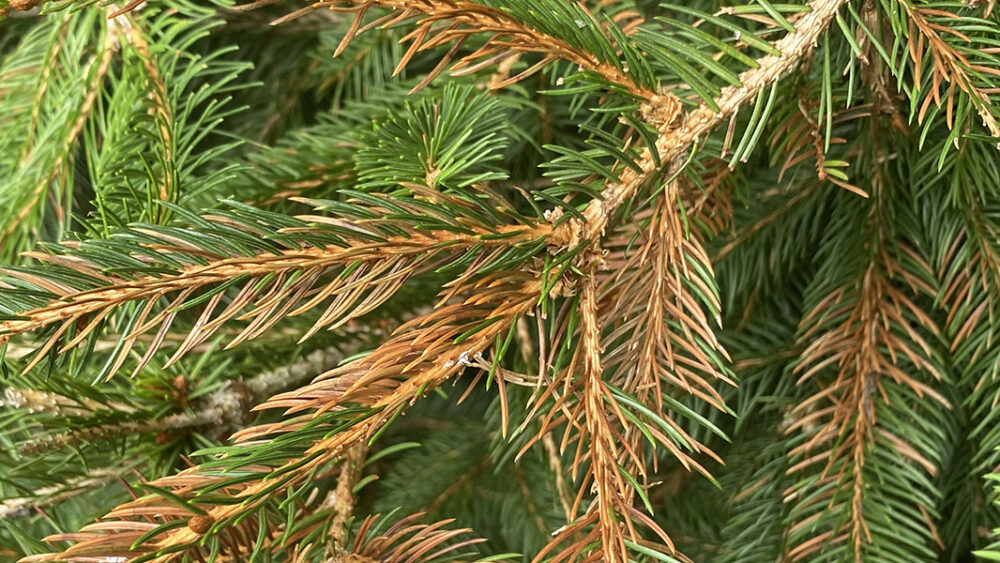Shrubs turning brown is not a good look in any garden and, thanks to the number of causes, can be a perplexing problem. However, before you resort to measures like soil injections, read through these tips from Rick’s PHC Certified Arborists.
Why Are Your Shrubs Turning Brown?
There are several reasons for shrubs to have brown leaves and dead branches. These include:
- Extreme temperatures: A sudden cold spell can shock the leaves into turning brown. We commonly call this winter burn or winter damage, but it can also happen during a heat wave.
- Disease or pests: Look for signs of insect infestation or disease. Boxwood blight will cause leaf discoloration, but you should also inspect the root system for signs of damage. Powdery mildew will cause discoloration and leave a furry residue.
- Drastic weather changes: This is most likely to affect shrubs in a sunny, unsheltered spot. If the weather warms up during winter, it tricks the shrub into growing. However, there is unlikely to be enough water for the new growth.
- Water issues: Over or underwatering are both causes of shrubs turning brown.
- Fertilizer overload: Using too much fertilizer increases the levels of salt in the soil, thereby causing leaf burn.
Is My Shrub Dying?
Most people automatically assume this, but it is not always true. Inspect the bush to see if there are any green buds. If there are, your plant is still alive. If not, perform a scratch test to see if there is any green tissue below the surface of the bark. Do this on a few branches.
If most of the branches are green and moist, your bush should recover. However, if most are dry, those branches are dead, and the shrub is either dead or dying.
What Should I Do When My Shrub Turns Brown?
Your best solution is to call in a certified arborist as soon as possible. Doing so eliminates the guesswork and can win valuable time that can save the plant. However, here are some first-aid tips in the interim:
- If the leaves turned in the middle of a heat wave, give the shrub a deep watering.
- If the problem occurred during a bitterly cold winter, use an anti-desiccant spray.
- Do you see signs of insects or disease? Call us before the problem spreads.
- Has winter featured fluctuating temperatures? Then watch for new growth and water well if you see any. Prune away dead wood that doesn’t sprout.
- Check the soil. If it is saturated, stop watering until the soil has a chance to dry out. If it is bone dry, deeply water the area.
- If you just fertilized the soil, it’s possible that the formulation was too strong. Water copiously to flush the excess nutrients away and ease up with your next application.
Contact a Certified Arborist Today!
Are you unsure of your next steps and cannot understand why your shrubs are turning brown? Contact Rick’s PHC Certified Arborists at (610) 840-2655 to schedule a consultation with a certified arborist and solve the problem quickly.


Comments are closed.